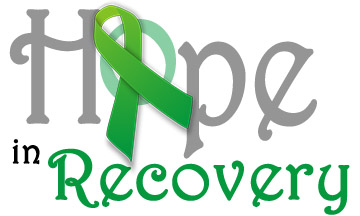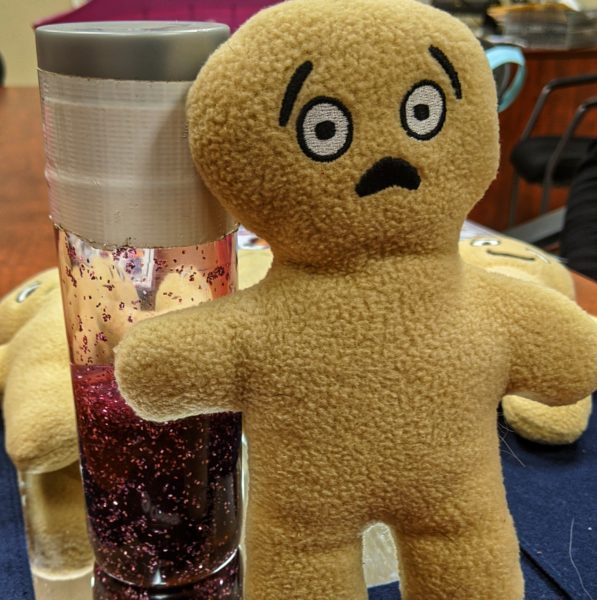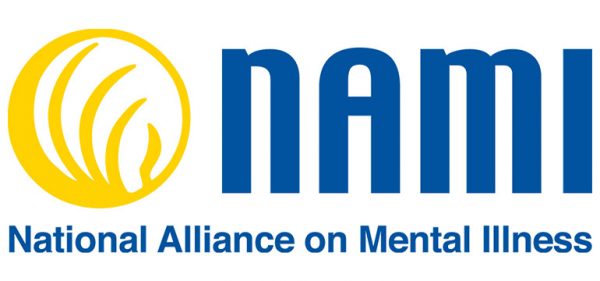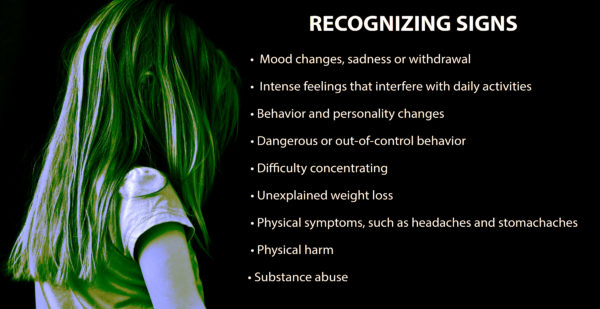Weelunk’s Nora Edinger recently wrote about the problems our area is facing with the shortage of mental health services. It’s hard enough to be an adult in crisis. Children and adolescents face the same struggles, often with even greater challenges.
It’s important to understand how children’s and adolescents’ mental health differs from that of adults. Moreover, why does it suddenly feel as though our kids are more overwhelmed than ever? And what can we, as parents, caregivers and teachers do when a child is facing mental health issues?
WORKING WITH CHILDREN AND ADOLESCENTS
I went to the National Alliance for Mental Illness (NAMI) to talk with Amy Gamble, the executive director, and Erin Roxby. Erin is the president of the NAMI Board of Directors and a developmental specialist for West Virginia Birth to Three doing early intervention. However, she began her career as an early childhood teacher, and that’s when she recognized how intensely children are affected by their environment and the caregivers within it.
“I went to school in Ashland, Ohio, right by Mansfield, where they have a maximum security facility,” she said. “So I was in one of the schools … with lots of kiddos that had moved there so moms could be close to dads who were in prison. I starting thinking, ‘What is the atmosphere in their home like? What are they exposed to every day? What are they exposed to when they go and they sit all day long in the prison waiting room to see Dad, and how is that affecting them and how is that manifesting?’”
She explained that children mirror adults’ feelings (including those of their mother struggling through their father’s incarceration). This is most evident when studying infant and toddler mental health. It’s often a surprising concept that babies struggle, too.
“I’m hoping that as we’re talking about depression more and anxiety more, people are starting to realize babies absolutely are affected,” she said. “Their bodies know. Even in utero, those little baby bodies know stress effects.”
As a teacher, Erin realized the vital role of the parents in working with a child’s teachers. Parents must be able to communicate, to give details about their child’s environment.
“I needed to know, did Mom work midnight last night? Where was this little guy? What happened? Did he get good sleep? Was somebody fighting? It affects his entire day,” she said.
In her daily work with young children, Erin helps them develop their emotional IQ. Children cannot always put a name on a specific emotion — they don’t yet have the language or the ability to articulate how they’re feeling. She uses her “buddies” — a set of dolls wearing various facial expressions — and a bottle filled with glitter to help them identify their feelings.
 “I ask them things like, ‘Is it in your tummy? Is it up here in your heart? Your head? What does it feel like? Does it feel fizzy?’ That’s when I shake up the bottle, and it gets all crazy. That’s when I ask, ‘What can we do to help?’” she said.
“I ask them things like, ‘Is it in your tummy? Is it up here in your heart? Your head? What does it feel like? Does it feel fizzy?’ That’s when I shake up the bottle, and it gets all crazy. That’s when I ask, ‘What can we do to help?’” she said.
Erin’s area of focus is birth to three, but many of her techniques work with older children and adolescents, too. Though teens may be able to identify feelings of rage or sadness, they may not be able to pinpoint the source. Doing so helps them and their caregivers.
WHERE DID THIS COME FROM?
If it feels like there’s been an uptick in children and adolescent mental health issues, it’s because there has been, and not just in the Ohio Valley or West Virginia. It’s happening everywhere. The numbers (provided by Mental Health America) don’t lie:
• 1 in 5 children has mental health issues
• 30 percent of children have anxiety
• 9.2 percent of youth have severe depression (This often co-occurs with other mental health conditions, specifically anxiety disorders. It also puts youth at higher risk for substance use disorder. Childhood depression is more likely to persist into adulthood if gone untreated.)
Also, according to a report by the Ohio Department of Health, suicide is now the leading cause of death for Ohio children ages 10 to 14.
Here’s the stat the bothered me the most:
• Per the American Psychiatric Association, for every 100,000 children and adolescents, there should be 47 psychiatrists. In West Virginia, there are six.
Per the American Psychiatric Association, for every 100,000 children and adolescents, there should be 47 psychiatrists. In West Virginia, there are six.
This lack of mental health care means West Virginians may have to travel long distances for psychiatric care, and that’s often difficult. Some don’t drive. Some can’t take the time off work. The wait can be months.
Poverty, too, has a direct effect on mental illness. Living in poverty — as 19.1 percent of West Virginians do — leads to risk factors for poor mental and physical health. And for a parent who struggles to put food on the table, finding a child psychiatrist — a journey that may require an entire day off, depending on how far they must travel — just can’t be a priority. And, as Erin Roxby explained, parental stress will then be mirrored in the children.
She says that children’s emotional “buckets” are often empty. Normally, it’s up to the caregivers to help fill that bucket back up with the proper care and attention. Unfortunately, the caregivers may also be running on empty. In most families, both parents work full-time. There’s an incredible amount of pressure in our daily lives. We may see our kids slipping, but how do we arrest their fall when we, too, are struggling to survive the day, earn a living and keep our families healthy? A parent with an empty bucket has so little to give.
THE OPIOID CRISIS
Opioids, too, play a big role in mental health issues. Mental health professionals see about 30 percent of children in their practices impacted as a result of the opioid crisis. Parental substance abuse was cited as a factor in 32 percent of foster placements, according to the U.S. Department of Health and Human Services. Up to 80 percent of children in the foster care system suffer from significant mental health issues.
In a 2018 article for the American Psychological Association, John Kelly, Ph.D., an associate professor of psychiatry in addiction medicine at Harvard Medical School and the founder and director of the Recovery Research Institute at Massachusetts General Hospital, addressed the way children fall through the cracks:
“[Children are] a neglected subpopulation. Because we’re trying to put out the fire in terms of stopping overdose deaths, we haven’t really been attending to other casualties, including kids most importantly.”
STRESS EVERYWHERE
No one seems immune to stress. In addition to caregivers, Erin believes that the current rise in incidents involving student abuse by teachers and school employees speaks to the level of stress they, too, are under. No teacher goes into the profession because they dislike children, so how does it happen?
 “To me, teachers are like gold,” Erin said. “They’re the gold standard. They’re on a pedestal.” She believes these incidents speak to the very same “fizzy” feeling that her youngest clients experience.
“To me, teachers are like gold,” Erin said. “They’re the gold standard. They’re on a pedestal.” She believes these incidents speak to the very same “fizzy” feeling that her youngest clients experience.
“People are letting it get so busy inside that it’s exploding out,” she said.
I asked Erin and Amy Gamble what Ohio Valley residents can do to bring mental health services back to our area.
Erin answered, “Advocacy. We don’t have it here. We’ve got to travel to get services. We can go to Morgantown, where they’ve got great services, and Pittsburgh. We’ve got to go at least an hour, hour and a half, two hours. That’s not acceptable. So how do we get [services] to come back? Well, we’ve got to use our voices. We’ve got to be pretty brave and say, ‘Hey, I need this. And sometimes I can’t wait an hour and a half. I can’t wait for these long waiting list.’ We need help now.”
Speaking out isn’t easy. It’s a difficult topic and has long been a taboo subject. But NAMI and mental health advocates warn that silence is dangerous. There’s no shame in asking for help, and there’s no shame in telling people you’ve sought it. The more people speak up, the more we normalize mental health, and NAMI is here to support that.
RECOGNIZING SIGNS
There are a variety of signs of mental illness to watch for in children and adolescents. If you notice any of these signs, (graphic below), it’s important to talk to your child’s doctor right away. It’s also a good idea to check in with their teachers at school.

CHECKING IN WITH YOUR CHILD
Erin recommends a daily check-in for kids. Take a quiet moment with your child, away from screens and distractions. Don’t ask what they did that day; ask what they’re feeling about the day. Ask them what they think might be causing their emotions and how they might go back and re-do a negative interaction.
Tailor the daily check-in to your child’s age. You can ask a young child if they feel fizzy in their tummy. Adolescents and teens might be open to reflection or even some subtle role-playing. Go over their day with them. Ask them how they think they did. Erin says it’s a valuable practice for adults, too.
In Part Two, we’ll look at one local family’s experience with their child’s mental health crisis.
• Laura Jackson Roberts is an environmental writer and humorist in Wheeling, West Virginia. She holds an MFA in creative writing from Chatham University and serves as the Northern Panhandle representative of West Virginia Writers. Her hobbies include hiking, travel and rescuing homeless dogs. Visit her at laurajacksonroberts.com.


